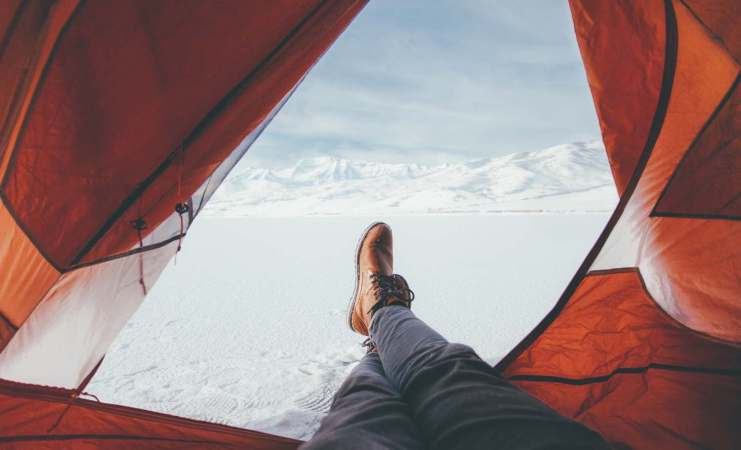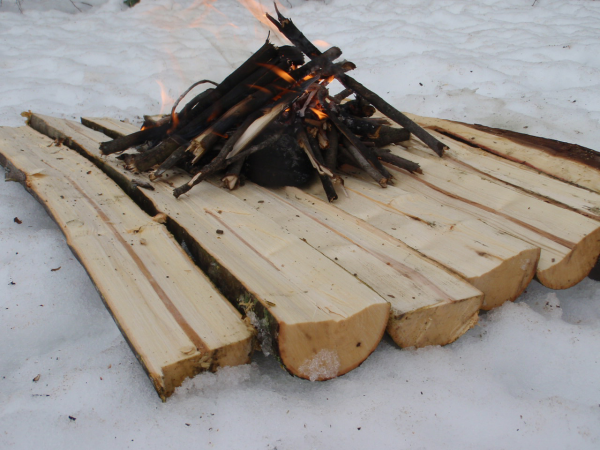

A backpacker hikes through the woods, feet crunching through snow, working up a sweat as she trudges miles into the wilderness to set up camp. In the evening, with her clothes still damp from the day’s exertion, she can’t stop shivering and her muscles grow stiff.
A cross-country skier glides through a winter wonderland, amazed by the sparkling snow and lonely landscape, when his skis crash through a frozen lake. As he gasps for breath, trying in vain to stay afloat, the icy water shocks his system and he feels like his heart has stopped.
As their body temperatures drop, hypothermia sets in. Unless they know what to do, it’s only a matter of time before both the hiker and the skier lose consciousness and succumb to the cold.
Wet or dry, 800 people died in 2015 due to hypothermia in the U.S. alone, according to the Centers for Disease Control and Prevention. That’s more than heat-related deaths, which were less than half that number. Knowing how to avoid hypothermia, and what to do if you or your companions ever face it, is key whenever you are in the outdoors.
Understanding hypothermia
Hypothermia is more than just a chill—it’s a serious condition that can lead to heart failure and death, though probably not as quickly as you think.
Normally, our thermoregulation system—powered by the hypothalamus—balances out our body temperature automatically to keep things around 98.6 degrees Fahrenheit. Hypothermia happens when there’s a significant drop in our core temperature, and our body is incapable of making up for the heat it loses.
And while heat loss is directly related to ambient temperature (think thermometer readings), other conditions increase your risk exponentially. Cold, wet, and wind all play a role in unleashing hypothermia, but wet may be the worst of the three.
Water conducts heat away from the body 25 times faster than air in similar temperatures, and even at that pace, heat loss can be 10 times faster when there’s movement like swimming or rushing water involved. You could die from hypothermia after up to 10 hours of prolonged exposure to cold air in dry conditions, but it would only take one or two hours if you were submerged in cold water.
Know the signs
Gordon Giesbrecht, PhD—also known as Professor Popsicle—is and professor at the Faculty of Kinesiology and Recreation Management at the University of Manitoba, and he knows what to do when cold becomes deadly. For years he’s been subjecting himself and other volunteers to extreme tests (including repeatedly submerging himself in ice cold water) to determine what exposure to extremely low temperatures does to a person. As a result, he’s experienced firsthand how long you have to rescue yourself before cold becomes incapacitating, how long it takes for hypothermia to kick in water and on land, and how dangerous it really is.
According to Giesbrecht, when you first become hypothermic, you’ll just feel cold. The danger begins when that familiar chill turns into an intense shiver that lasts longer than 5 or 10 minutes.
“That’s a sign that your body is losing more heat than you’re producing,” Giesbrecht says.
Then numbness sets in—likely in your fingers and toes first. After that, you’ll feel nothing because your nerve endings and receptors will no longer be functioning properly. As your ability to think and move starts to decrease, you’ll become irritable and find it hard to concentrate. After that, you’ll step into moderate hypothermia territory, where the shivering stops, and loss of consciousness is just around the corner.
It is scary, but getting to this stage doesn’t necessarily mean you’re dead or about to die. Your heart won’t stop beating until your body drops below a core temperature of 82 degrees Fahrenheit. But if you’re alone, your chances of being rescued are slim, and if you’re in the water without a life jacket, you’ll undoubtedly drown.
Stay calm

If you think you might be hypothermic, don’t panic. Instead, remember three things—change your activity, your insulation, or your environment.
“[Altering your] activity will change your body’s heat production, insulation will decrease your heat loss, and your environment will provide shelter,” Giesbrecht explains.
Change your activity by moving—light exercise can make a big difference when it comes to warming up your body. Then, change your insulation by removing wet clothes and adding more layers—wrap yourself in a sleeping bag or blanket if you have it. Lastly, change your environment however you are able, by either going indoors or taking shelter.
If you’re in the wilderness and a car, house or cabin isn’t available, head inside your tent. If you don’t have one of those either, construct a shelter using what’s available to you—a pile of pine boughs will help insulate you from the cold ground if you don’t have a sleeping pad, and a tarp or emergency blanket will protect you from the wind, snow and rain.
Hypothermia in cold water is quicker (and deadlier)
Cold exposure is far more dangerous when water is involved, especially if you are submerged in it. Giesbrecht has done much research on the topic, using himself as a test subject on a regular basis.
What he’s discovered is that in water staying calm is not important: it’s a matter of life or death. “You can die within seconds in cold water, not from hypothermia, but from drowning,” Giesbrecht explains.
When submerged in icy water, the body hyperventilates as it goes through the cold shock response, and if the head goes under before breathing gets under control (which takes about a minute), drowning is a distinct possibility. If you end up in cold water, concentrate on getting your breathing back to normal and keeping your head above water. You’ll lose more body heat than you produce by thrashing around, so try kicking and swimming as little as possible.
In a situation like this, you’ll have 10 minutes before the cold starts to incapacitate your muscles, so as soon as you have your breathing under control, try to get back on the ice using the kick-and-pull method. Put your arms on the ice and kick your legs until your body is horizontal near the water’s surface, then kick as hard as you can, and use your arms to pull yourself along the icy surface until you are out. Roll away from the hole you fell through until you get to thicker, safer ice or solid ground.
This method is easier than pushing or pulling the full weight of your soaked body out of the water when it has already started to go numb or lose the ability to move freely.
Keep it dry, keep it safe

If you’re out in cold weather, follow Giesbrecht’s number one principle: keep water out of your stuff. Store gear in waterproof bags, always have a dry set of clothes, and remember that sweat is the enemy. This is why synthetic fabrics are far superior for outdoor pursuits—they dry much faster than cotton.
The Inuit people have a saying, Giesbrecht recalls: “If you sweat, you die.” Here’s why: You usually start off with too many layers for what you’re about to do, whether it’s ice fishing, skiing, backpacking, or taking a stroll in the woods. Your body temperature starts to rise, and soon enough you’re sweating and uncomfortable, which will prompt you to unzip or remove layers to cool down. Inevitably, you’ll take a break. That’s when you’ll start to feel the chill, which you’ll try to fight by putting cold, sweaty layers back on. Eventually you’ll start working again, and the vicious cycle will continue. The difference is that your body will not be able to maintain a steady temperature anymore, and getting warm will be harder and harder each time.
To avoid this, remember it’s OK to be a little chilly just before any physical activity in the outdoors. You will warm up quickly once you start to move, so don’t be afraid to remove a layer or two before you get too hot and sweaty. If you’re still feeling cold after ten minutes, go ahead and add a layer back on.
How to treat hypothermia
If you or somebody else think you might be hypothermic, don’t wait to take action—if you’ve already lost fine motor skills and can’t do much to warm yourself, a hiking buddy will be invaluable.
Treat a hypothermic patient as gently as possible—keep them horizontal, dry, and insulate them from the elements as much as you can. According to Giesbrecht, in the wilderness, there’s not a lot of things you can do to treat hypothermia—not even a fire—so the next step is figuring out how you’re going to get them to civilization and medical care.
Lastly, if the person is still alert, give them high calorie food or drink like hot chocolate or nut butter—when it comes to heating up the body, calories matter.
Bottom line: always be prepared
“Anytime you walk away from safety, ask yourself two questions: do I have the equipment I need if I have to spend the night in the wilderness, and do I have the skills required?” Giesbrecht says. After all, matches are no good if you don’t know how to light a fire. Instead, always prepare yourself with at least a daypack and a couple of extra layers for any length excursion, and the knowledge of how to use the survival tools within.
And if you ever face a dangerous situation with hypothermia, remember to never lose hope: 95% of searches are over within 24 hours, so if you can survive one night, there’s a good chance you’ll be found and rescued















